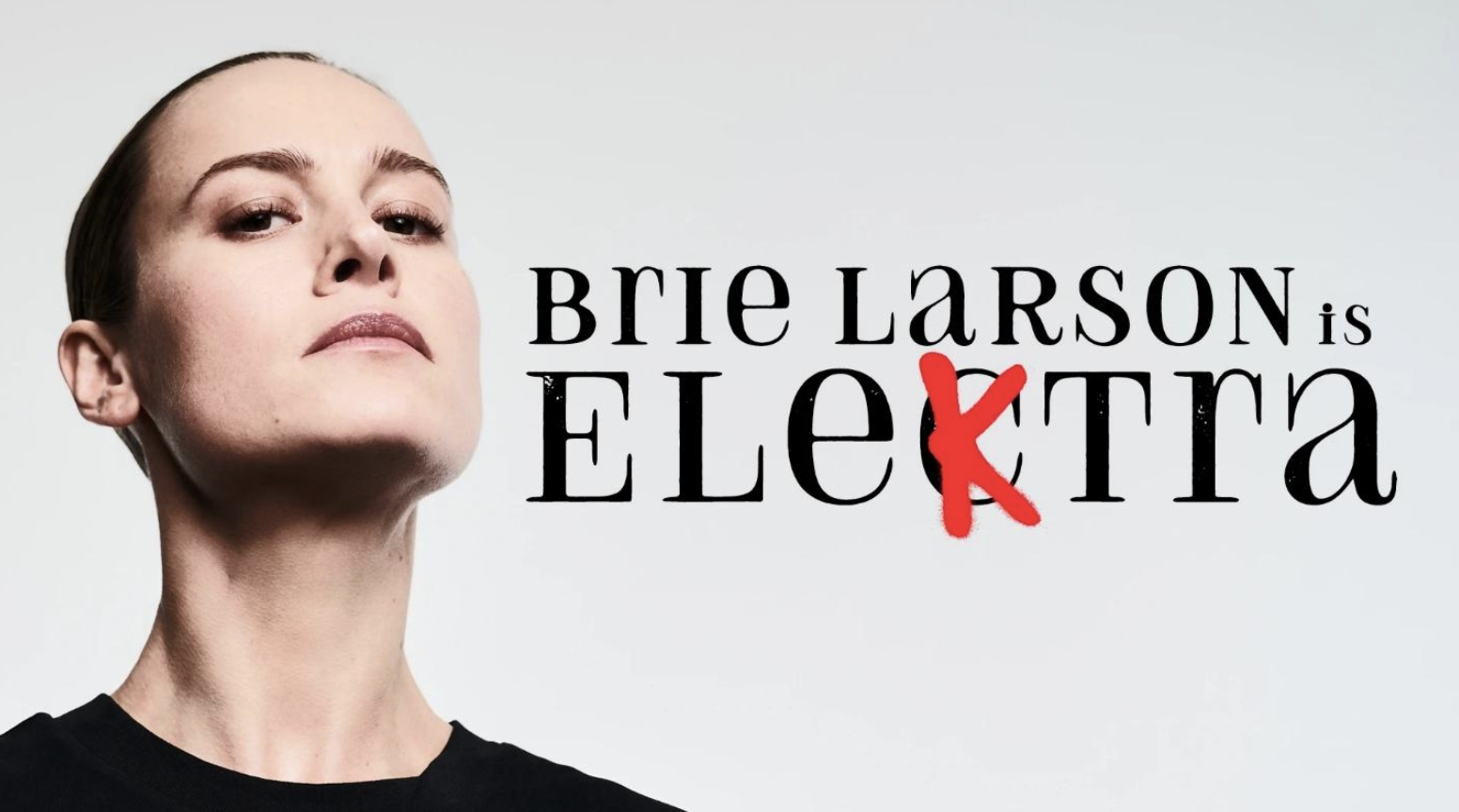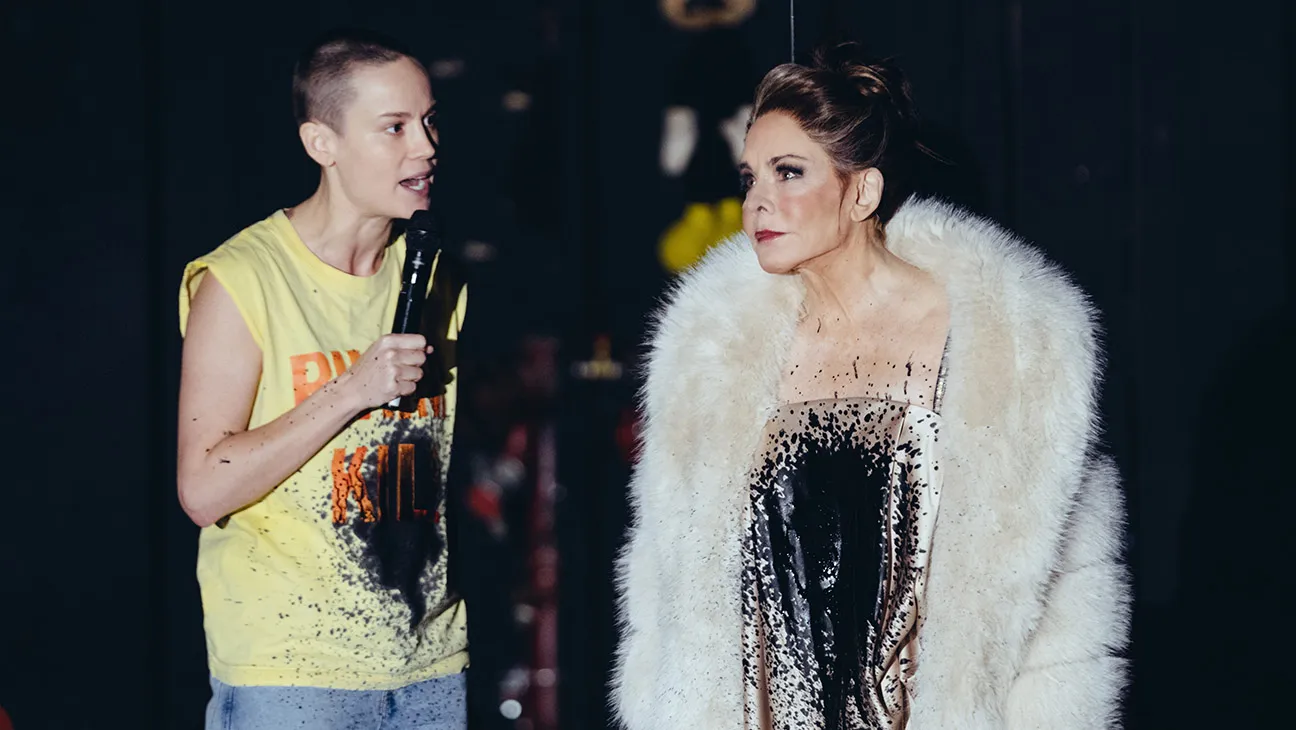
Buzz-cut hairdo, Brie Larson looks down her nose at us, in snuffy disapproval. A black shadow caresses the left edge of her cheek, slithers under her chin. It seems to elevate her face and lengthen the neck, emphasizing her sneering stare. The poster indicates the imminent flavor: the relationship that Larson constructs between us and her, the protagonist, Sophocles’ Elektra.
Of course, us – the viewers – have done nothing wrong, but the poster places us as Elektra’s mother, Clytemnestra (played by Stockard Channing). The plot follows Elektra avenging the death of her father, King Agamemnon, who was murdered under Clytemnestra and her lover, Aegisthus. Tense family relationships unpeel over the course of this tragedy, but the mother-daughter rivalry is the most compelling. The desire to murder one’s mother is a taboo that entrances the human psyche, as recognized by Freud in his Electra complex.
Enjoy independent, ad-free journalism - delivered to your inbox each week
Brie transforms herself into a moody teenager while constructing this pernicious relationship. She strides around the stage in a neon vest, microphone in hand, and, at one point, sports a playboy fur-coat. In Euripides’ version of the play, Elektra describes her own grief-stricken appearance – “My hands, my tongue, my anguished heart, my close-cropped head” – which helps to explain the buzzcut. But Daniel Fish as Director seems to transform this element in his highly stylized rendition to make it punk.
This recasting of a hairstyle that would have indicated mourning in ancient Greek is highly compelling. The whole image – along with the hybrid speech-sing style – resembles a punk concert. Every time someone utters the name of Elektra’s stepfather, Aegisthus, the characters spit on the floor in unison. This is dramatic, at first, but after a while its somewhat tiresome repetition induces audience concern for dry mouths and a potential saliva slip-and-slide on stage. His name was said many times…
Low-moody tones are glistened by the beauty of an all-female chorus, who sing in angelic unison. Their harmonious singing is reminiscent, in parts, of an Oxbridge college choir: rising above the humdrum of everyday life to contemplate the heavenly sphere. Synchronicity of voice is matched by that of action. The chorus assume several positions – leaning back with microphones forward, organizing themselves in a line, and sitting legs wide open – that impress ancient Greek statues, as if one had broken into a cast factory.
Whereas the chorus stun for their synchronicity, other characters transform into distinctive personalities. Stockard Channing’s rendition of Clytemnestra gives Cruella de Vil vibes. She is draped in white fur with her hair slicked back, brunette with a badger-white stripe. The phrase “to cast a glamour” referred to a spell of enchantment in the eighteenth century. Glamour for Clytemnestra is indicative of her self-obsession, and the selling of family bonds to satisfy lust and remain on the side of success.

Stockard Channing’s Clytemnestra oozes Cruella-like glamour – self-obsessed, spellbinding, and ready to trade family for power and desire.
I’m sure that many theater-goers in the full audience purchased the ticket for the purpose of seeing Brie Larson, rather than Elektra itself. My American neighbor explained, “Brie Larson is in it, of courseeee I had to come.” It’s true, she was impressive, but the play turned into her moaning and losing the initial fury and texture so wonderfully constructed at the beginning. It reminded me of a production of Hamlet that I once watched in Cambridge. The first half was wonderful – captivating, enunciated, each line punched with emotional depth – but throughout the whole second half, each character was so grief-torn that emotion dribbled into a hopeless pool of incomprehension.
Hazy moodiness certainly obscured narrative drive in Elektra, not helped by the ambiguous staging. Some elements contributed clarity – for example, the revolving stage that was summoned by both Elektra and her mother on separate occasions by a sharp wrist-rotation towards the upper galleries, as if conjuring a spell. These acts reinforced the theme of narcissism, providing effective visual illustration of the world revolving around them. The rotating motion also contributed further beauty to the synchronicity of the chorus, whose steps in the same direction were spun in the other by the stage, with their shadows rotating on the screen behind in mesmerizing patterns.
Help Ensure our Survival
Most confusing were the overly produced elements. A blimp hung over the stage without explanation, and during the murder scene an audio excerpt of an interview played over a Tannoy. Some unidentifiable woman described the scenes from an unidentifiable genocide – burnt-out faces, bodies in bags, brandished skin. Tragically confusing. Contemporary references are welcome, but not without reason. Before the play concludes, Aegisthus sits by Elektra on the stage edge and places his hand on her thigh – an obvious allusion to sexual assault, and a strong narrative suggestion to throw in at the end. Given Larson’s outspoken advocacy for the #MeToo movement, I can’t help but think this is her own “creative” contribution.
Meaning is often obscured by overindulgent stage directions, and the text by Anne Carson that is used for the script – a translation notoriously difficult to understand. There are many aspects of intrigue – punk, synchronicity, and individual performances – but somewhat strange stylistic decisions and directing that tries to incorporate too many themes detracts from the intense relationship between mother and daughter, wherein lies the time-immemorial value of the play.




Comments (0)
Only supporting or founding members can comment on our articles.